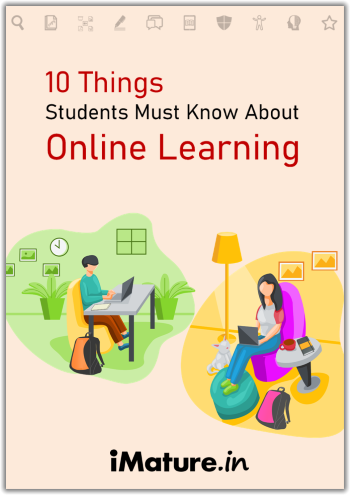
Copy and Paste is amongst the easiest of things you can do on a computer. You have probably done it thousands (and your child, hundreds) of times by now. But this simple and innocent-looking process has earned a very bad name in the world of education & industry – "Plagiarism". Well, thankfully, not all copy-paste acts are Plagiarism. Let’s understand the difference.
But let’s first deal with the permanent problem of English language... how is it pronounced? It’s pronounced like “play-jia-rizm” or “प्लेजियरिज़म”. Okay, let’s get back to business.
Copy-Paste vs Plagiarism
Basically, Plagiarism is when a person claims to be the creator of the content which was created by someone else. Content includes written or spoken words, photographs, drawings, any kind of artwork. It doesn’t matter whether you are copying a small or a large part of someone’s creation. If you are not giving credits to the original creator, it is equivalent to claiming that you created it, and it is plagiarism.
A student is free to copy-paste as much as she wants from the Internet, as long as it is for her personal use. Keeping notes for self-learning or creating a personal library is fine. The moment she presents the copied content to someone without giving credits to the original creator, she enters the danger zone of plagiarism.
“Danger zone”? C’mon, who takes it seriously?
All leading universities & colleges of the world and all leading corporates (basically every organization which is important for your child’s career) takes plagiarism very seriously. At university & college level, it is normal to have a zero-tolerance policy towards plagiarism. Your admission application, projects & assignments during the course, research thesis etc is checked for plagiarism. If in any part of the student’s work is found to be plagiarized, she can face the following actions:
|
Extent of Plagiarsm
|
Action taken against the student
|
|
Plagiarism in admission application (statement of purpose or other documents). Or in personal blog, video, presentation or anything shared online by the student, which is assessed by the admission council.
|
Instant rejection of admission application.
and/or
Blacklisting of the student which prevents her from applying to some other universities.
|
|
Plagiarism in mid-term submissions
|
Cancellation of assignment or project and a warning. Maybe a penalty/fine too.
|
|
Plagiarism in final submissions (thesis, project reports etc.).
or
Repeat behavior of plagiarism at any stage.
|
Expulsion from the institution, and in case of foreign students, deportation to home country.
and/or
Legal action
|
“Teachers are always over-burdened! They cannot look for plagiarism in every student’s work.”
Wrong! Don’t think that only a few unlucky students get caught if and when the teacher looks for plagiarism... They CAN look for plagiarism in EVERY student’s work. Detecting plagiarism is easy with the help of anti-plagiarism software like TurnItIn. They help to quickly find out how much percent of a document has been plagiarized from another source.
There are many other tools for checking plagiarism which can be used by students, for example Plagiarisima, Grammarly, Copyscape, Copyleaks etc.
How to avoid plagiarism?
The following steps to avoid plagiarism are a matter of practice. The sooner a student begins doing these, the safer it is for her:
- Before copying from any document, website, blog or any online source, check which license the author has published the content under. Apart from the usual ‘© Copyright’, there are 7 types of ‘Creative Commons Licenses’ which give different levels of usage permissions to the public. If you cannot find any licensing information for a content, you may safely assume that it is protected by the ‘Copyright’ license.
- In case of a ‘Copyright’ license, it is best to send a request to the creator via email, for permission to use his work in your’s.
- Most important! Give credit to the original author, in the proper way, at every place in your work where you are using someone else’s creation. To understand the proper way of giving credit to the original source, read this.
- Before submitting any important assignment, project report, or any critical document, run it through a plagiarism checker tool. There are many available online.
All of the above skills are important to become an Internet Mature student! Our online course ‘Digital Citizenship & Internet Maturity - Basics’ deals with these in a comprehensive manner.
Sadly schools are letting it happen everyday :(
Just like Copy-Paste, checking for licensing information and giving credits properly, is a matter of habit. And, habits are best inculcated during the school years. In my 15 years of EdTech career, I have been to more than 200 educational institutes across India. Among those, the number of schools and colleges combined, who showed any kind of seriousness about teaching skills to avoid plagiarism, is less than 5! This lack of awareness is due to the lack Internet maturity among teachers and administrators of the schools & colleges.
I strongly urge all parents...
Please do not wait for education system to change for giving the critical skills to your children. Not teaching your child how to avoid plagiarism is like encouraging her to mindlessly copy-paste stuff from the Internet. That unchecked habit is almost a guarantee of a career-crisis for your child in the 21st century knowledge economy. Make sure your child reads our free eBook ’10 Things Students Must Know About Online Learning’, especially if he or she is a teenager. Chapter-2 of the eBook explains the issue of plagiarism to students.
